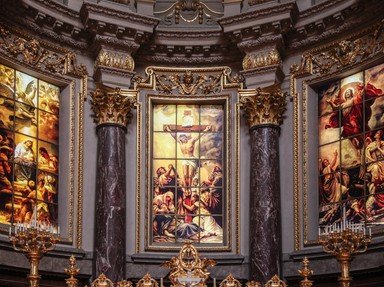Quiz Answer Key and Fun Facts
1. Was and has been loved by everyone, especially children; lived during the 4th century
2. Allowed her faith in God to guide her as she led the French army in battles against the English
3. Born in the 5th century; a monk who revolutionized Christian monasteries with his writings known as his "Rule"
4. Given credit as the first European-born missionary to bring the news of Christianity to India and Japan
5. Born the daughter of a poor innkeeper, she married future Roman Emperor, Constantius Chlorus; mother of Emperor Constantine the Great
6. Chancellor of the English government who was assassinated by knights of King Henry II in the Canterbury Cathedral in 1170
7. Patron saint of Ireland; credited with teaching pagan practicing people about the Trinity by using the shamrock
8. Patron saint of animals, the environment, Italy and Cub Scouts who founded several religious orders based on the lifestyle of Jesus Christ
9. Depicted slaying a dragon; sentenced to death by Roman Emperor Diocletian because he would not renounce his Christian faith
10. Placed great emphasis on the importance of caring for the poor and sick; stressed education for those called into Christian service
Source: Author
cowboybluedog
This quiz was reviewed by FunTrivia editor
looney_tunes before going online.
Any errors found in FunTrivia content are routinely corrected through our feedback system.
